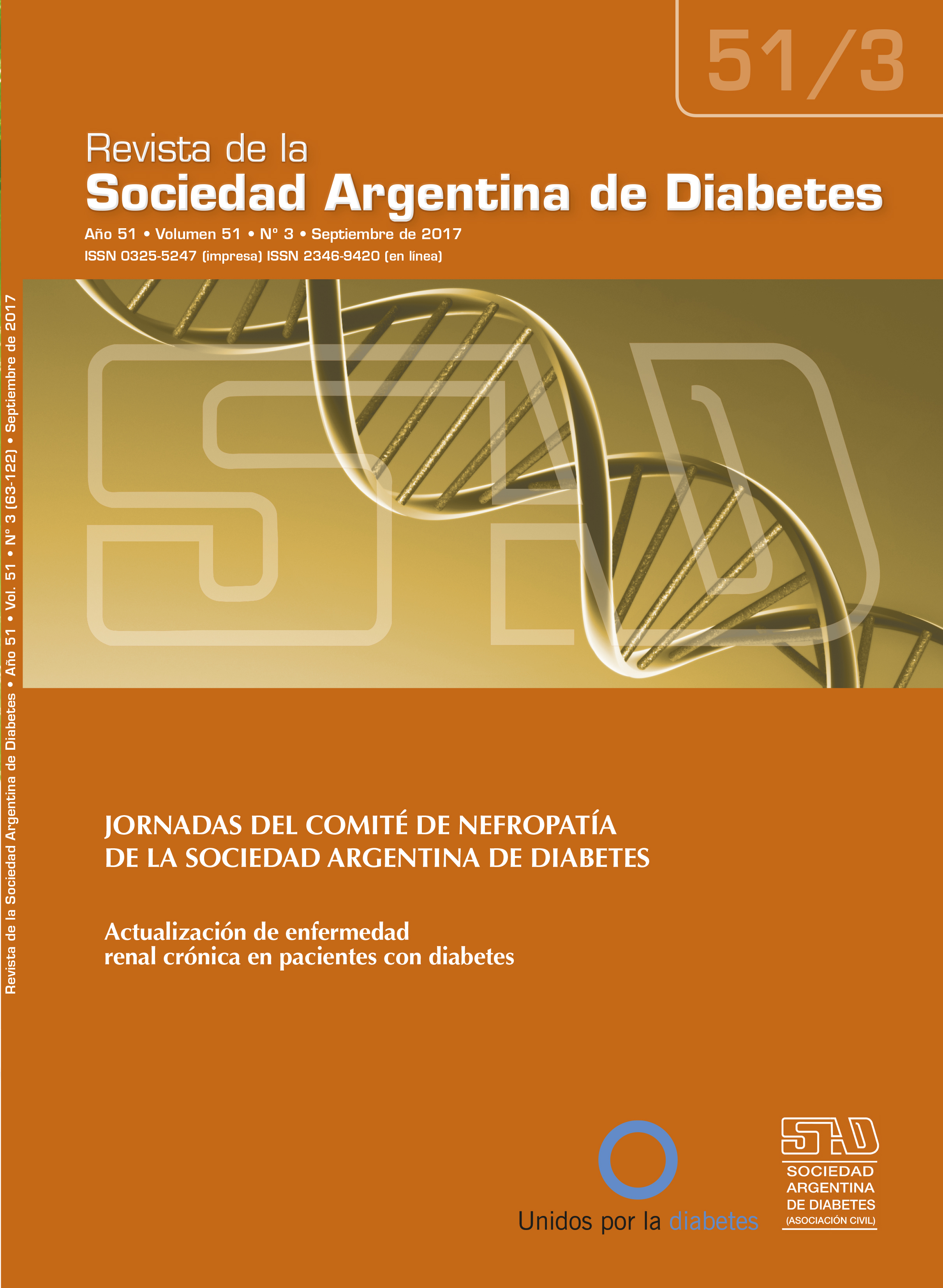Physiopathology of diabetic kidney disease
DOI:
https://doi.org/10.47196/diab.v51i3.101Keywords:
kidney disease caused by diabetes, hyperglycemia, podocytes, SGLT-1, SGLT-2, tubuloglomerular feedback, increase of intraglomerular pressureAbstract
Kidney disease caused by diabetes is a microvascular compli- cation in which hemodynamic, metabolic changes, oxidative stress and inflammation increase occur in the kidneys. This determines an increase of the mesangial extracellular matrix, basement membrane thickness, loss of podocyte foot and tubu- lar cells disruption with fibrosis and proteinuria. The increase of receptors SGLT-1 and SGLT-2 expression, with the resulting and marked reduction of Na+ offer to the macula densa is wrongly construed as a reduction of plasmatic volume by the yuxta-glo- merular complex through the “tubuloglomerular feedback”, ge- nerating vasodilation of the afferent arterioles and the resulting increase in intraglomerular pressure. This changes the classical glomerular concept, interpreting that there may be an initial le- sion at the tubular level.
References
Shahbazian H, Rezaii I. Diabetic kidney disease: review of the current knowledge. J Renal Inj Prev 2013; 2(2): 73-80.
Van der Zijl NJ, Moors CC, Goossens GH, et al. Does interference with the renin-angiotensin system protect against diabetes? Evidence and mechanisms. Diabetes Obes Metab 2012; 14(7): 586-95.
Barutta F, Bruno G, Grimaldi S, et al. Inflammation in diabetic nephropathy: moving toward clinical bio- markers and targets for treatment. Endocrine 2015; 48(3):730-42.
Tagawa A,Yasuda M, Kume S, et al. Impaired podocyte autophagy exacerbates proteinuria in diabetic nephro- pathy. Diabetes 2016; 65(3):755-67.
Zhan M, Usman IM, Sun L, et al. Disruption of renal tubular mitochondrial quality control by myo-inositol oxygenase in diabetic kidney disease. J Am Soc Ne- phrol 2015; 26(6): 1304-21.
Tuttle K. Back to the future: glomerular hyperfiltration and the diabetic kidney. Diabetes 2017; 66: 14-16.
Heerspink HJ, Perkins BA, Fitchett DH, et al. Sodium glucose cotransporter 2 inhibitors in the treatment of diabetes mellitus cardiovascular and kidney effects, potential mechanisms, and clinical applications. Circu- lation 2016; 134(10):752-72.
Downloads
Published
Issue
Section
License

This work is licensed under a Creative Commons Attribution-NonCommercial-NoDerivatives 4.0 International License.
Dirección Nacional de Derecho de Autor, Exp. N° 5.333.129. Instituto Nacional de la Propiedad Industrial, Marca «Revista de la Sociedad Argentina de Diabetes - Asociación Civil» N° de concesión 2.605.405 y N° de disposición 1.404/13.
La Revista de la SAD está licenciada bajo Licencia Creative Commons Atribución – No Comercial – Sin Obra Derivada 4.0 Internacional.
Por otra parte, la Revista SAD permite que los autores mantengan los derechos de autor sin restricciones.



















